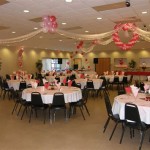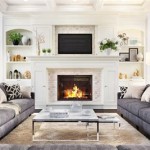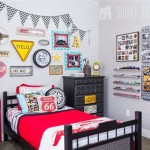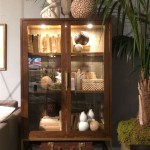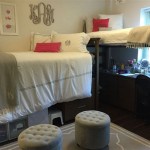Ideas to Decorate a Dining Table
The dining table serves as a focal point in many homes, acting not only as a practical surface for meals but also as a statement of personal style and an opportunity to create an inviting atmosphere. Decorating a dining table effectively involves considering factors such as the room's overall aesthetic, the table's size and shape, and the intended use of the space. A well-decorated dining table enhances the dining experience and contributes to the overall ambiance of the home.
This article explores various ideas to decorate a dining table, focusing on different styles, themes, and practical considerations. The goal is to provide readers with a comprehensive understanding of how to transform their dining table into a visually appealing and functional element of their living space.
Choosing a Foundation: Table Linens and Runners
Table linens and runners form the foundation of any dining table decoration. They provide a base upon which other decorative elements can be layered, adding color, texture, and pattern to the overall design. The selection of table linens and runners should be carefully considered, taking into account the table's size, shape, and the desired aesthetic.
A tablecloth offers a complete covering for the table, providing a formal and elegant backdrop for dining. The choice of fabric, color, and pattern can significantly impact the overall look. For formal occasions, linen or damask tablecloths in neutral colors are often preferred. For more casual settings, cotton or blended fabrics in brighter colors or patterns can be used.
Table runners offer a more streamlined and versatile option. They run lengthwise down the center of the table, leaving the sides exposed. Table runners can be used on their own or layered over a tablecloth to add visual interest and definition. They come in a wide variety of materials, colors, and patterns, allowing for easy customization to suit any style.
When selecting table linens and runners, it is essential to consider the size and shape of the table. The tablecloth should drape evenly on all sides, with an appropriate overhang. The table runner should be wide enough to accommodate the centerpiece and other decorative elements, but not so wide that it overwhelms the table.
The material of the table linens and runners should also be considered. Linen is a classic choice for formal occasions, offering a luxurious feel and elegant drape. Cotton is a more durable and versatile option, suitable for everyday use. Synthetic fabrics, such as polyester, are easy to care for and resistant to wrinkles, making them a practical choice for busy households.
The color and pattern of the table linens and runners should complement the room's overall color scheme and style. Neutral colors, such as white, cream, and gray, provide a versatile backdrop that can be easily paired with other decorative elements. Bold colors and patterns can add visual interest and personality to the table, but should be used judiciously to avoid overwhelming the space.
Creating a Centerpiece: From Florals to Sculptural Elements
The centerpiece is the focal point of the dining table decoration, drawing the eye and setting the tone for the entire setting. The choice of centerpiece depends on the desired aesthetic, the size and shape of the table, and the occasion. Centerpieces can range from simple floral arrangements to elaborate sculptural displays.
Floral arrangements are a classic choice for dining table centerpieces. They add natural beauty, color, and fragrance to the space. Floral arrangements can be simple or elaborate, depending on the occasion and the desired effect. A single vase of flowers can be just as effective as a large, multi-tiered arrangement.
When selecting flowers for a centerpiece, it is important to consider the color scheme of the room and the desired aesthetic. Neutral-colored flowers, such as white roses or hydrangeas, provide a classic and elegant look. Bold-colored flowers, such as sunflowers or gerberas, can add a pop of color and energy to the space.
The size and shape of the floral arrangement should be appropriate for the size and shape of the table. A large, elaborate arrangement may overwhelm a small table, while a small, simple arrangement may get lost on a large table. The height of the arrangement should also be considered, ensuring that it does not obstruct the view across the table.
In addition to floral arrangements, sculptural elements can also be used as dining table centerpieces. These can include candles, vases, bowls, and other decorative objects. Sculptural elements can add texture, dimension, and visual interest to the table.
Candles are a popular choice for dining table centerpieces, creating a warm and inviting ambiance. They can be used alone or in combination with other decorative elements. Candles come in a variety of shapes, sizes, and colors, allowing for easy customization to suit any style.
Vases and bowls can also be used as dining table centerpieces. They can be filled with flowers, fruit, or other decorative objects. Vases and bowls add height, texture, and visual interest to the table.
When selecting sculptural elements for a centerpiece, it is important to consider the overall style of the room and the desired aesthetic. Modern and minimalist spaces may benefit from simple, geometric shapes, while more traditional spaces may benefit from more ornate and detailed designs.
Adding Accents: Place Settings, Chargers, and Napkins
Place settings, chargers, and napkins add the finishing touches to the dining table decoration. They provide a refined and elegant look, enhancing the dining experience and contributing to the overall ambiance of the space. The selection of these elements should be carefully considered, taking into account the style of the dinnerware, the table linens, and the desired aesthetic.
Place settings consist of the dinnerware, cutlery, and glassware that are used for each guest. The style of the dinnerware should complement the overall style of the room and the occasion. Formal occasions may call for fine china, while more casual occasions may allow for more relaxed and informal dinnerware.
The choice of cutlery should also complement the dinnerware and the overall style of the setting. Silverware is a classic choice for formal occasions, while stainless steel is a more durable and practical option for everyday use. The placement of the cutlery should follow proper etiquette, with the forks to the left of the plate, the knives to the right, and the spoons to the right of the knives.
Glassware adds both functionality and visual appeal to the dining table. The choice of glassware depends on the beverages being served and the overall style of the setting. Wine glasses, water glasses, and champagne flutes are essential for formal occasions, while tumblers and juice glasses are more appropriate for casual settings.
Chargers are decorative plates that are placed under the dinner plate. They add a layer of elegance and sophistication to the table setting. Chargers come in a variety of materials, colors, and patterns, allowing for easy customization to suit any style. They can be used for both formal and informal occasions.
Napkins are an essential element of the dining table setting, providing both functionality and visual appeal. They can be made of fabric or paper, depending on the occasion and the desired aesthetic. Fabric napkins are more formal and elegant, while paper napkins are more convenient and practical. The color and pattern of the napkins should complement the table linens and the overall style of the setting.
The way the napkins are folded or presented can also add to the overall effect. Simple folds, such as a triangle or a rectangle, are appropriate for casual settings, while more elaborate folds, such as a fan or a rose, are more appropriate for formal occasions. Napkin rings can also be used to add a touch of elegance and sophistication to the table setting.
Arranging place settings involves meticulous attention to detail. Each element should be placed precisely and aesthetically pleasing. The charger, if used, sits directly under the dinner plate. The napkin is typically placed to the left of the forks, either folded or in a napkin ring. Utensils are arranged from the outside in, in the order they will be used. Glassware is placed to the upper right of the plate.
By carefully considering these elements, the dining table can be transformed into a welcoming and visually appealing space, enhancing the dining experience for all.

80 Best Dining Room Ideas And Decorating Tips

Dining Table Décor Ideas For Your Home Designcafe

Rustic Dining Room Decor Ideas

Dining Room Table Decor Ideas How To Decorate Your

Cozy Dining Room Decorating Ideas Sanctuary Home Decor

Dining Room Decorating Idea And Model Home Tour Small Dinning Decor Inspiration

80 Best Dining Room Ideas And Decorating Tips

30 Best And Plush Dining Room Decoration Ideas For Your Home

6 Tips To Decorate A Dining Room Pottery Barn

Beautiful And Easy Dining Room Table Centerpiece Ideas Stonegable

